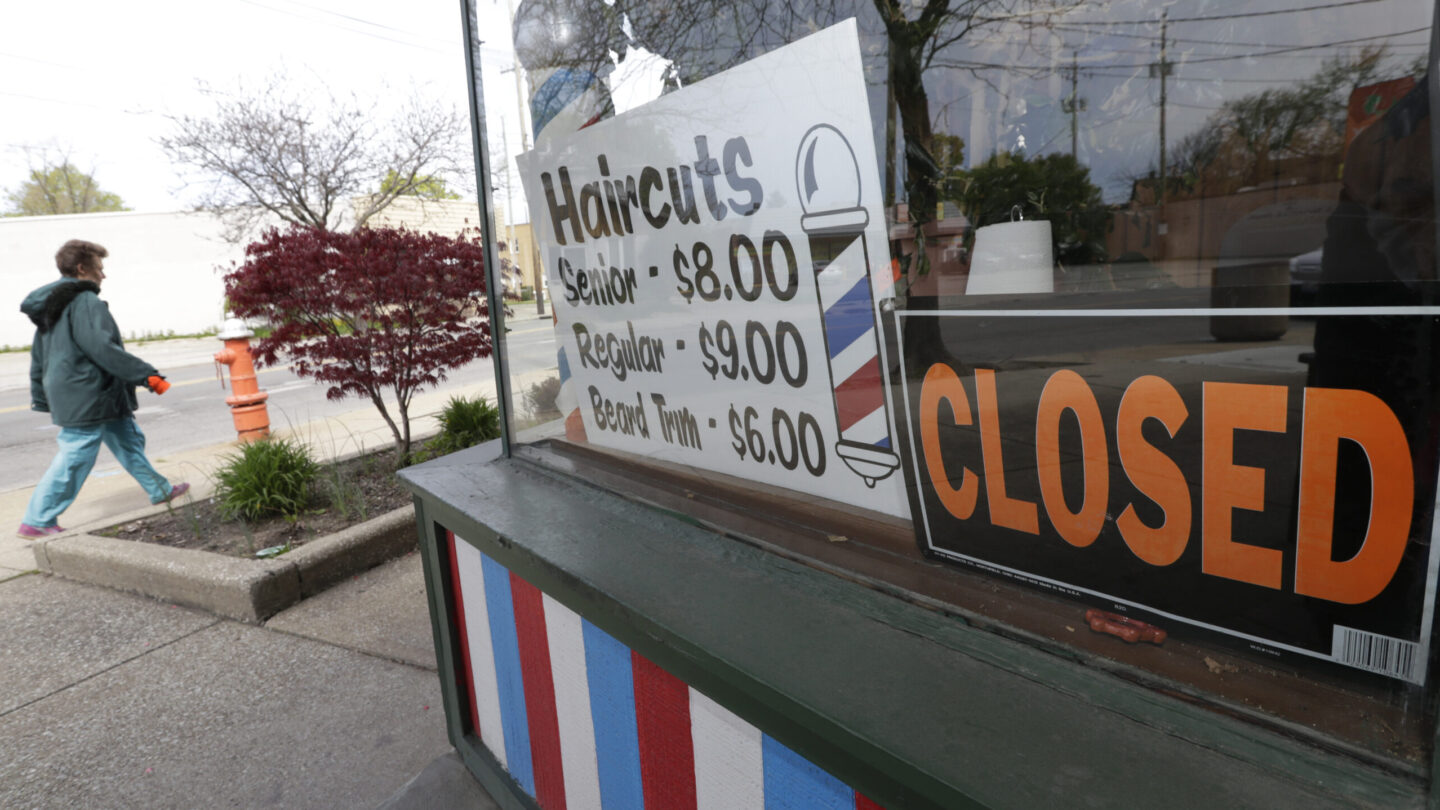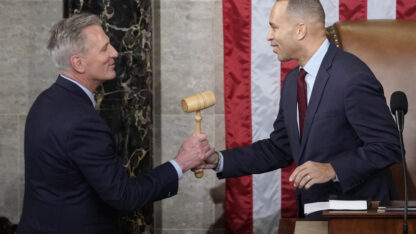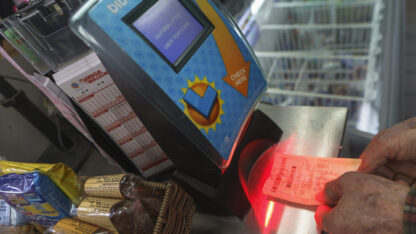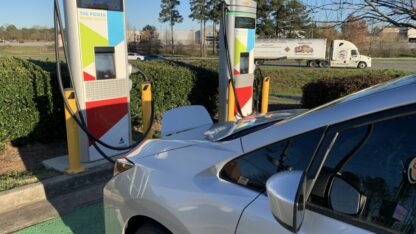“The PPP program seems to have resulted in billions of dollars of fraudulent loans that have ultimately turned into grants,” said Samuel Kruger, an assistant professor of finance at the University of Texas at Austin who co-authored a paper estimating that $64 billion of the nearly $800 billion in loans issued show signs of fraud, such as suspiciously high payrolls and multiple businesses listed at the same home address.
The SBA disputes those findings, but its own inspector general has estimated that at least 70,000 loans are potentially fraudulent. An unknown additional number of loans went to companies that didn’t need PPP funding to survive the pandemic.
And although the Justice Department and other federal agencies have up to ten years to prosecute pandemic fraud, the SBA’s inspector general has called that pursuit a “pay-and-chase” situation unlikely to recover much money.
NPR dissected the decision-making behind the Paycheck Protection Program that led to it being widely seen as a massive government giveaway. We spoke with numerous bankers, economists, and government officials under former President Trump and President Biden — since the program spanned both administrations — to find out why loan forgiveness was so lenient, especially after the highly publicized misuse of the program. Their responses involved copious finger-pointing, blame-shifting and buck-passing, making accountability elusive.
“There are very few things you could do to actually disqualify yourself”
In the frenzied early days of COVID, as PPP was created in great haste to keep businesses from potentially collapsing, the loans were simple to get: Companies simply had to pledge that the economic threat of the pandemic made the funding necessary. But what it would take later to qualify for forgiveness was hazy.
“It was entirely unclear at the beginning,” said Eric Lichatin, a commercial loan officer at Centreville Bank in Rhode Island, which was inundated by calls from customers wanting PPP loans. “The SBA really rushed to get this program out there, which I think they should be commended for…but a lot of the details were very unclear to businesses and banks.”
As the program evolved, its rules became increasingly complicated, and even experts struggled to make sense of them. At one point, the SBA published a list of “frequently asked questions” on loan forgiveness that was eleven pages long. One consulting firm issued a client advisory headlined: “Fast and furious: The rules for the PPP…continue to emerge at a brisk pace, often updating previous guidance.”
That confusion posed a dilemma for many companies: Should they take the money if they may have to pay it back?
Some banking professionals, including Lichatin, advised their customers to accept the funding, put it in a separate account, and wait to use it until the rules became more clear.
“Then, if you don’t need the money, you can always just pay back the loan,” Lichatin explained. “But you do have it as a safety net available to you in case your business does take a massive hit.”
That recommendation proved wise, because Congress weakened PPP forgiveness criteria over time.
For example, the Paycheck Protection Program Flexibility Act, signed into law by President Trump in June 2020, gave some borrowers full forgiveness even if they didn’t fully restore their workforce: A company could offer a laid-off employee a job, and even if the employee turned it down, the company was still credited with maintaining worker headcount.
Congress also expanded the ways the loan money could be spent. Originally, it was primarily meant to keep workers on the payroll. Eventually, businesses could use it for non-payroll costs, including property damage from looting and vandalism.
The rules became so lenient that anyone who received $150,000 or less — which accounts for more than 90 percent of all borrowers — could get the full loan amount forgiven just by promising they had used the money correctly. No supporting documentation needed.
Some of these changes were called safe harbors, and “given the way the safe harbors are written, there are very few things you could do to actually disqualify yourself [from loan forgiveness] other than out-and-out fraud,” said David Autor, an economics professor at the Massachusetts Institute of Technology who has studied PPP.
In his view, the Paycheck Protection Program made almost any use of the loan money legal — and therefore eligible for forgiveness — and gave the SBA little ability to police bad actors.
“I’d like to make this as easy as possible”
Congress made PPP forgiveness rules increasingly lax because that’s what businesses lobbied their elected representatives for.
At a Senate Small Business Committee hearing in June 2020, Utah Sen. Mitt Romney said some of his constituents were “beginning to be concerned about whether or not they’re going to be qualified for forgiveness” and expressed hope “that we’re not sticklers, that we instead are looking to help people get forgiveness.”
At the same hearing, Louisiana Sen. John N. Kennedy told then-Treasury Secretary Steven Mnuchin that “small businesswomen and small businessmen think that the federal government is going to double-cross them on the forgiveness of these loans. You need to be mindful of that.”
In response, Mnuchin offered assurances that “the majority of this money is going to be forgiven in the next few months, and that’s our intent,” adding that “I’d like to make this as easy as possible.”
He made those remarks despite acknowledging that some well-resourced loan recipients, such as the Los Angeles Lakers, should not have applied for the funding, which they later returned.
“We thought that people would self-select appropriately,” Mnuchin told the committee, “and unfortunately there were a number of companies that were high-profile that took the loans.”
The following month, at a July 2020 House oversight hearing on government pandemic relief, Mnuchin again conceded that the Paycheck Protection Program was being abused, due in part to having been launched at breakneck speed.
“I’m concerned about fraud and want to make sure that the oversight committees are comfortable that this money was used appropriately,” Mnuchin added. “But we made the judgment it was more important to get it up-and-running quickly [and] that sending money to people four months later wasn’t going to help small businesses.”
At that hearing, Mnuchin pledged that government officials would be stricter with PPP loan forgiveness than with loan approvals.
“We are going to have a very robust process to review loans before loans are forgiven.” he said, noting that “in the forgiveness process, people will be required to provide much more data.”
“Eight hundred billion dollars. Here it is. Don’t pay it back.”
But forgiveness has been anything but robust.
The SBA has closely scrutinized just a tiny portion of PPP loans for fraud and forgiveness eligibility. The agency said it used computer models to review all 11.4 million loans, but that auditors have manually reviewed only about 215,000, or roughly 2% of the total, according to Patrick Kelley, associate administrator for the SBA’s Office of Capital Access.
Of these hands-on reviews, about 21,000 were denied forgiveness, or approximately 0.2% of all loans, he said. Meanwhile, the University of Texas researchers who studied PPP fraud estimate that the enforcement rate of chasing scam artists is “well under 0.1% in all cases.”
So when Autor hears companies praise the Paycheck Protection Program, he’s skeptical.
“It’s not that the program did no good,” he said, “but how could they not love it? I mean, what could be better: Eight hundred billion dollars. Here it is. Don’t pay it back.”
Bert Talerman, president of Cape Cod Five Cents Savings Bank, which processed roughly 3,700 PPP loans totaling about $315 million, has a more forgiving view.
“In some cases, there are some folks who probably didn’t need the money,” he said. “At the same time, those were crazy times,” he added, noting that PPP was created amid enormous societal fear and an unprecedented economic shutdown.
When COVID-19 was new and business closures were increasing, it was reasonable for many companies to believe a government loan may be necessary to survive the pandemic, he noted.
The number of jobs saved by PPP is difficult to quantify, with estimates ranging from as few as 1.5 million to as many as 18.6 million. But ultimately, Talerman said, “I would still say that in terms of an awful lot of small businesses, PPP saved the day.”
“They wanted it to be forgiven quickly”
Kelley, the SBA official, said it frustrates him when the SBA is criticized for its handling of the program because the agency took its guidance from Congress, which voted repeatedly to issue more loans and make them easier to forgive — even when it became obvious there was widespread fraud.
“I believe that Congress very clearly wanted this money to go out the door quickly, and they wanted it to be forgiven quickly,” he said.
Kelley also noted that Congress did not give the SBA authority to ask businesses whether, in retrospect, they truly required government assistance.
Saying to a company, “You know, it turns out that you probably didn’t need that loan; can you please give the money back?” was not an option for the agency, he said. As a result, for companies that flourished during the pandemic, a PPP loan sometimes became profit on top of profit.
Still, Kelley said he considers the Paycheck Protection Program a mighty feat that did more good than harm.
“It’s an easy sentiment, in my opinion, to say, ‘Well, there goes the government again. Why didn’t they do it right?’ But to me, it ignores the awesomeness of what did get done right,” he said. “I’ve met many, many, many, many, many more people who are thankful for the relief that we chose to do as a society together.”
But when pressed on why the government wasn’t more stringent in both approving loans and forgiving them, and why it is now scrambling to recover money that has already been paid out, Kelley said, “These are excellent questions for Secretary Mnuchin from the Trump administration.”
“My personal opinion? … That’s a totally different interview”
NPR’s request for comment from Mnuchin — who started a new private equity fund after leaving the Trump White House — was returned by Michael Faulkender, who served as an assistant Treasury secretary under Mnuchin and is a finance professor at the University of Maryland.
In an interview, Faulkender said the government always intended the vast majority of PPP loans to be forgiven and deliberately made speed the priority when launching the program, despite the risk of fraud. For example, about $3.6 billion in loans mistakenly went to people on the Treasury’s “Do Not Pay” list, according to the SBA’s inspector general.
Still, “because PPP got up and running, because all of those small businesses were able to maintain people on payroll, we did not realize the catastrophe that could have taken place had we failed,” Faulkender said. “What would bread lines during a pandemic have looked like? Do we want to know? I didn’t. And so we were going to get that program up and running.”
Echoing Kelley, Faulkender said the SBA’s responsibility was to implement the PPP legislation enacted by Congress, not to question congressional decision-making. And he said he believes the program rescued many people from unemployment.
“So from that perspective, I’m very proud of the work that we did at Treasury,” he said. “My personal opinion as an academic economist who evaluates the program? That’s a totally different interview.”
Elaborating, Faulkender said that, over time, Congress changed the purpose of PPP in a way that strayed from its original goal.
“At the front end, the program was very much let’s-save-employment. Later on, the program seemed to morph into let’s-provide-assistance-to-small businesses,” he said. “Whether or not we needed to morph that into a lot of small business grants, I can understand why that would be questionable.”
“You just want to tell these people, ‘Do your job!'”
So who are the small percentage of borrowers with unforgiven PPP loans?
According to NPR’s analysis of SBA data, the majority belong to one-person businesses — companies the Paycheck Protection Program most intended to help — and people whose loans were processed by financial technology companies, or fintechs, a nebulous term broadly defined as businesses that use technology to automate financial services.
Those two categories of borrowers are interrelated, because one-person companies were more likely to get their loans through fintechs than through traditional banks, which were criticized for neglecting smaller PPP applicants in favor of larger banking clients.
NPR found that the smallest businesses — sole proprietors like barbers, janitors and hair dressers — hold the highest rate of unforgiven loans, at 13 percent. By contrast, only 3 percent of all businesses with at least ten employees have unforgiven loans.
And in December, a lengthy congressional report accused several fintechs of hastily approving PPP loans to collect lucrative loan-processing fees, while ignoring obvious signs of borrower fraud. Meanwhile, a class-action lawsuit against the fintech Kabbage, which recently declared bankruptcy, alleges it was quick to approve PPP loans but dropped the ball when it came to forgiving them. Other fintechs appear to have a backlog of forgiveness requests, too.
In fact, according to an NPR analysis, about three-quarters of all unforgiven PPP loans involve fintechs.
Cape Cod landscaper Candy Crawford, a sole proprietor, became ensnared in that fintech muddle.
In spring 2020, her tiny landscaping company, Handy Candy, got a PPP loan of $1,022 through PayPal. She later learned that her loan had been sold to another company, and it ultimately took her more than two years to get it forgiven.
“The amount of energy and time I spent! You just want to tell these people, ‘Do your job!'” Crawford said. “But you have to be nice because you’re at their mercy.”
Other small-business owners interviewed by NPR listed a variety of reasons for having unforgiven PPP loans, including getting bad advice from accountants, misunderstanding the program’s rules, and mistakenly thinking forgiveness was automatic.
Some borrowers also pointed out that when you’re a busy small company with no support staff, you can’t delegate work. That’s the case for Katy Escher, who co-owns an Eastham, Mass., shop called ARTichoke and got an $8,275 PPP loan through Square. Since running into complications with her forgiveness application, she’s struggled to get answers.
“I can’t get ahold of the SBA, and then when I talk to a human being on Square, they tell us to contact the SBA,” Escher said, “so we’re just in teeter-totter land here.”
For now, ARTichoke’s forgiveness request remains in limbo.
“We wear many hats, and sometimes you have to choose which hat you have to wear based on the season or the time,” she added. “I wish that we had someone to say, ‘Hey, we need to figure this out,’ but we don’t.”
In the meantime, after the release of last month’s congressional report, the SBA announced that it has suspended fintechs Blueacorn and Womply from working with the agency “in any capacity.” The SBA also said it has “launched a full investigation” of several other fintechs.
“All of these small businesses…they were just torturing them,” said Nancy Kelly, owner of a small Boston accounting firm that got a $60,000 PPP loan through Kabbage, and who described the forgiveness process as a prolonged ordeal. “If I had known the difficulty, I would have just lived without the loan.”
“A very costly thing to do”
If another financial crisis comes, will the government be better financially prepared?
David Autor, the MIT economist, has his doubts. He argues that even if Congress and the SBA had tried to administer the Paycheck Protection Program more efficiently, the antiquated state of many U.S. government technological systems would have made that difficult.
In the case of PPP, that meant the Treasury and SBA were unable to precisely target companies that most needed pandemic-related financial assistance — something many European countries were able to do through “short-time work” programs, which, aided by government access to payroll data, helped companies reduce hours rather than resort to layoffs.
Instead, the U.S. government blindly gushed a massive amount of money into its economy and hoped for the best, Autor said.
“It’s as if you came home from work one day, walked into your kitchen, and noticed, ‘Oh my God, there’s a small fire by the stove — I need to put this out.’ But you don’t have a fire extinguisher,” he said. “So you go outside, connect a huge hose to a fire hydrant, and come in and douse your entire house with water. Well, that would certainly put out the fire, but it would be a very costly thing to do.”
In that sense, he said, the Paycheck Protection Program prioritized speed over accuracy at a very high price — and continues to do so by forgiving the majority of loans, including many flagged as suspicious.
That infuriates Beba Touloupis, who with her husband co-owns Ted’s Restaurant in Birmingham, Ala., which serves cafeteria-style Southern cooking. When COVID shutdowns left them able to sell only take-out orders, they watched their business plummet from more than 200 people a day to as few as ten. A $45,000 PPP loan kept some of their workers on the payroll, but so far the loan remains unforgiven.
So Touloupis was shocked when a long-time customer told her he received a PPP loan that he said wasn’t necessary for his company’s survival, yet was forgiven.
“He had the nerve to tell me that he got money and he didn’t need it,” Touloupis said. “And that was, like, three times the amount of money I got — maybe four. And I looked at him and thought, ‘I don’t ever want to see you in my restaurant again.'”
She said she is disgusted that while the pandemic was devastating for many restaurants, hotels and other hospitality businesses, other companies thrived during COVID yet got their PPP loans forgiven.
“While I’m here, trying to keep these doors open and keep my employees working,” she added. “It’s wrong. It is so wrong.”
Roy Thurston, owner of the Blue Heron Gallery in Wellfleet, Mass., a seasonal Cape Cod business that opened about a month later than usual in 2020 due to COVID shutdowns, shares Touloupis’ frustration.
Thurston received about $14,000 in PPP loans, all forgiven, and questions why businesses like TB12, a sports nutrition company co-founded by NFL quarterback Tom Brady, were also eligible. TB12 got a PPP loan for about $960,000, also forgiven — even though, Thurston notes, Brady bought a yacht in 2021 with an estimated price tag of $6 million.
“What bothers me is the people that took money that should have known better than to take money,” Thurston said. “It should have been for people who really needed it.”
In the meantime, the Paycheck Protection Program has contributed to the country’s $31 trillion federal debt, an amount that eventually could lead to higher taxes and fewer government services.
“Basically,” said MIT’s Autor, “we’ve just put a huge debt on our children to pay people in the present.”
This story was edited by Meg Anderson and Barrie Hardymon. Sierra Lyons contributed to the reporting. Art direction and photo editing by Emily Bogle.
Copyright 2023 NPR. To see more, visit https://www.npr.org.
9(MDAxODM0MDY4MDEyMTY4NDA3MzI3YjkzMw004))

9(MDAxODM0MDY4MDEyMTY4NDA3MzI3YjkzMw004))








